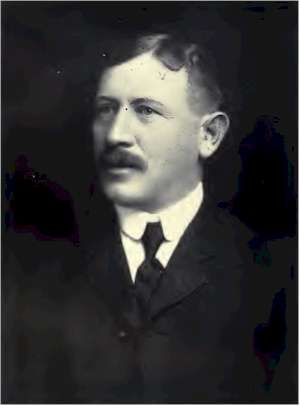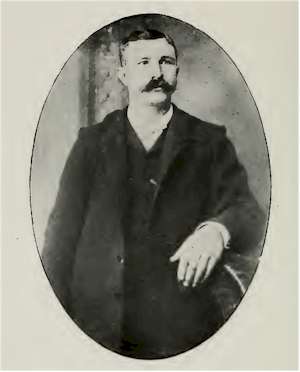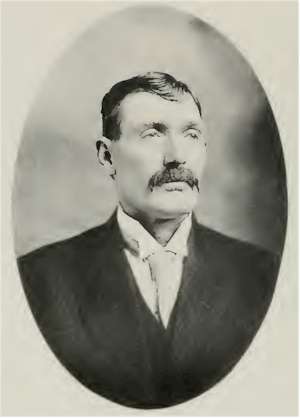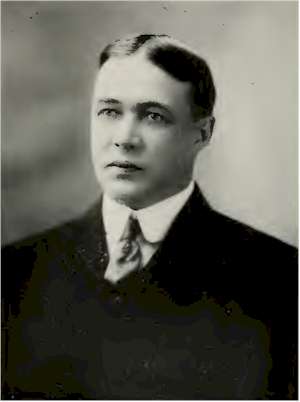Utah Biographies ~ Richter to Sexman

Richter, Adolph
Adolph
Richter, who is one of the leading real-estate men of Salt Lake
City, is in every sense of the term a self-made man. He was born
in Germany, August 10, 1859, and was educated in the schools of
Stettin. Graduating from the high school there, he found himself
being influenced by a desire to seek a new home in America.
Deter-mining on this step, he reached New York in 1878 and
sought and secured employment for a while in the Fulton Street
market.
About a year later he came west and joined a surveying party
which the government was sending to Alaska. This early
exploration and surveying trip was a most valuable and
interesting experience for Mr. Richter, and when it was
completed he returned to the States, remaining a while in San
Francisco and later locating in the Black Hills of South Dakota.
Here he was employed for another year and went from the Black
Hills to Colorado, working at Leadville, Aspen and other mining
camps, acquiring a knowledge of mining men and mining interests
that has proved invaluable to him.
He came to Salt Lake in 1891, and was a pioneer of the slogan
that Salt Lake is a city of opportunities. From the day he
opened a real-estate office in Salt Lake until to-day he has
been one of the most successful men in his line in the country.
He devotes his entire time and attention to the real-estate
business, and his name is perhaps better known than many other
prominent citizens of the town. He is proud of the City of Salt
Lake and is always willing to lend his moral and financial aid
to anything and everything that will accrue to its best
interests.
While not a club man in any sense of the word, and although he
does not bother with politics, he is prominent in the Commercial
Club and is one of the prime movers in the Salt Lake Real Estate
Association.
He was married to Miss Lucy A. Deakin in May, 1893, and, while
he has no children, he is very domestic in his tastes and habits
and spends much of his time at his comfortable home at 87 L
Street.

Roland, August
August
Roland, president and treasurer of the Murray Meat and Live
Stock Company, was born and educated in Germany, and emigrated
to this country in 1871. Mr. Roland followed in the footsteps of
his father, who was a successful dealer in livestock in the old
country, and it was from him that August inherited his universal
knowledge of that industry. It is doubtful if there is a man in
the inter-mountain country with a more practical knowledge of
the meat and livestock business than Mr. Roland. He first
settled in Grand Rapids, Michigan, engaging in the wholesale
meat business, and remained there until 1881. He next furnished
the Denver & Rio Grande and Colorado Midland railroads with beef
during the completion of their contracts for construction, which
kept him busy until 1889.
He then came to Salt Lake City, secured a partner and started in
the wholesale meat business, under the firm name of Roland and
Sampson. This enterprise lasted two years. In the meantime Mr.
Roland held a flock of sheep on the Utah range near Grand
Junction, and on account of the tariff being taken off wool on
the passage of the Wilson bill during President Cleveland's
administration, Mr. Roland sustained a loss of about two dollars
per head, which proved quite a setback to him. As he had about
thirty-two thousand head of sheep, he lost a fortune. However,
with rare courage, he returned to Salt Lake and started the
Murray Meat and Live Stock Company in 1893. Since then the plant
has been improved and shows equipment and sanitary conditions
unsurpassed by any of the big packing houses in the East. The
company does its own slaughtering, the cattle coming from the
principal cattle raising sections of the inter-mountain country.
Every animal bought is inspected before and after slaughter, in
accordance with the strictest inspection regulations, and any
that do not pass the most rigid inspection are condemned. The
plant is always open to inspection by visitors, which has always
been encouraged and invited.
Mr. Roland in a marked degree is a man of courage and
determination, with perseverance and an earnest endeavor to
succeed in business and to do what is right by everybody. He is
a man of practical ideas, and through his business experience
and travel and observation, he has become a man of broad general
information and of progressive views, and has made an
untarnished record in all his business connections. Socially he
has a happy faculty of making friends and enjoying their respect
and esteem.

Roundy, John
John Roundy
is a type of the practical mining man who has won success
through his own ability as a good mining man. He is one of Jesse
Knight's most valued men, and has been instrumental in
developing more valuable properties in the Tintic district than
any other man.
John Roundy was born May 18, 1864, at Springville, Utah. His
father, Loren H. Roundy, was a farmer and stock raiser, and his
mother was Jane Koyle Roundy. Young Roundy was educated in the
public schools of Springville, and his future knowledge was
gained by practical experience with the world.
Mr. Roundy is interested in the numerous Knight properties and
superintendent of same at Tintic. He has been interested in
mining matters since he was seventeen years of age, and has
operated in Nevada, Arizona and Utah, and at the present time is
holding some good properties in Nevada. Among the noted mines
that are good producers and valuable properties in the Tintic
district that Mr. Roundy developed and assisted in the
development of, are the Humbug, the Beck Tunnel, the Iron
Blossom, the Colorado, the Black Jack and Uncle Sam.
On February 14, 1889, Mr. Roundy was married to Eleanor McEwan,
and to them have been born seven children; namely: Nellie, John
M., Amanda, lone, Clayton Fern, Bert Lincoln, and Lorin H.
(deceased). He is a member of the Commercial Club of Provo, and
resides with his family at 146 South Academy Avenue in one of
the finest residences in Provo.

Saxman, Charles W.
When the
management of a big proposition is offered to the ordinary man
and it has been a sort of a bug-a-boo for years and years, he
hesitates a long time and tries to figure whether or not he will
be more successful than his predecessors. The Yampa Smelting
Company and the Yampa Mine, owned by the Tintic Mining
Development Company of New York, both of which are located in
Bingham, Utah, were generally conceded by all those conversant
with the conditions in that camp as propositions which were
bound to be failures. Two years ago a young man of quiet
demeanor came out from the coal fields of Pennsylvania, where he
had been operating, and took hold as general manager of the two
properties mentioned, his name being Charles W. Saxman.
He was a young man, born on the 22nd of November, 1871, in
Latrobe, Pennsylvania. He received his preliminary education in
Swathmore College, Philadelphia, and finished in Harvard
University, Cambridge, Mass. He came west immediately after
graduating from the above-named university and for many years
engaged in mining in all the boom camps from Cripple Creek to
Goldfield. After gaining a wonderful experience in these camps
when they all were in their infancy, as you might say, he went
back to the coal fields of Pennsylvania, where his father had
been an operator for many years.
At this time, two years ago, the directors of the Yampa Mine and
Smelter as well as of other properties throughout the State and
British Columbia, began to look around for a man who could, as
it were, save the properties, especially in Bingham, and make
them paying propositions. Finally the proposition was put up to
Mr. Saxman, then a man of thirty-six years of age. He came out
here quietly and without ostentation. He spent a great deal of
his time right on the ground, and that to-day the Yampa Mine
yields a tonnage of 800 tons a day and the Smelter treats from
800 to 1000 tons a day against 250 tons when he assumed charge,
shows conclusively his ability and aggressiveness. Today the
Yampa Smelter is considered by all smelting men one of the most
complete and best-equipped plants in this or any other State. It
would take a book to go into details and show in what way this
young man wrought changes in the smelter and mine. They were
consummated so quickly and with such lack of show or display
that the people in the camp did not realize what was going on
until the reports began to spread that twice the number of men
were being employed and the capacity of the plant had almost
quadrupled. This smelter and mine, instead of being a drain on
the stockholders and those interested in its welfare, soon began
to put back into the coffers of the company the money which had
been put out for years to keep it running. A couple of months
ago Mr. Saxman resigned as manager of the Yampa Smelting Company
and the Tintic Mining and Development Company, as all the things
mentioned were not done without hard and consistent labor. He is
now taking a much-needed rest and shortly will take up his work
in other fields.
Socially Mr. Saxman is well known and liked. He is a member of
many organizations, both locally and in New York City. He
resides, when in Salt Lake, at the Alta Club and is also a
prominent member of the Commercial Club. In New York City he is
a member of the American Institute of Mining Engineers, the
American Mining Congress, the Harvard Club and the American
Geographical Society of that city. Since Mr. Saxman has been in
the city he has made many friends, and his fairness in all
matters and the high standard of integrity which he has
established in all his dealings have earned for him an enviable
reputation.

Index

Source: Sketches of the Inter-Mountain
States, Utah, Idaho and Nevada, Published by The Salt Lake
Tribune, Salt Lake City, Utah, 1909
|

